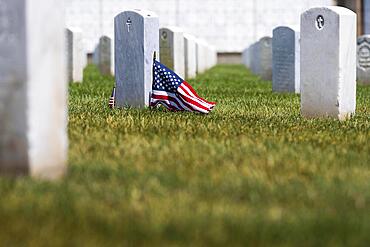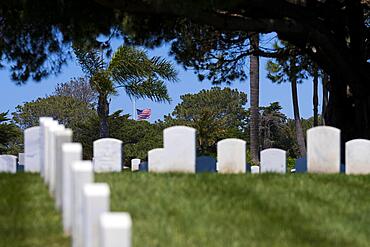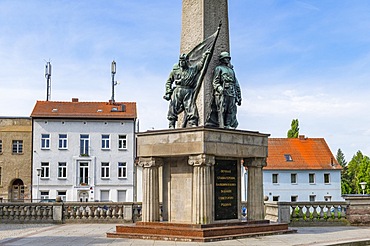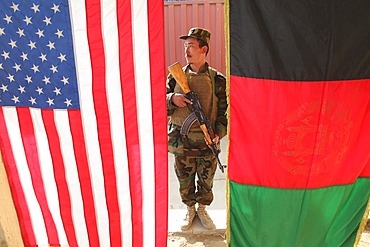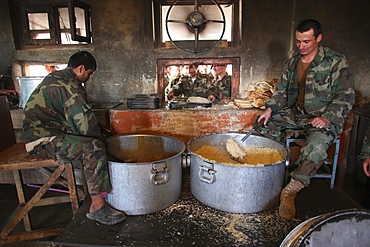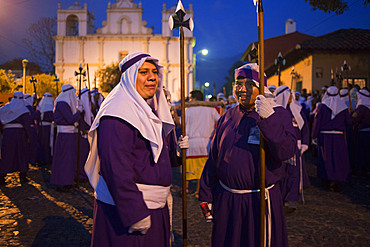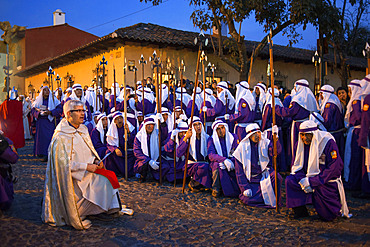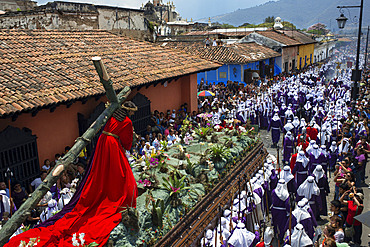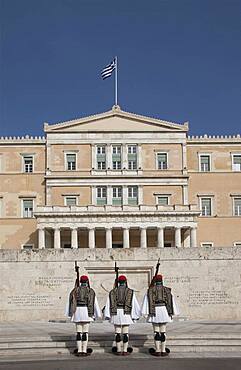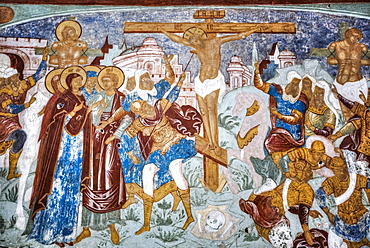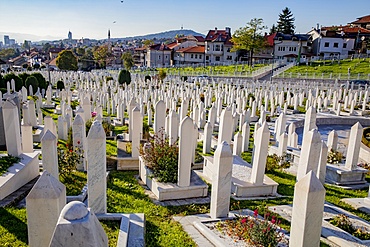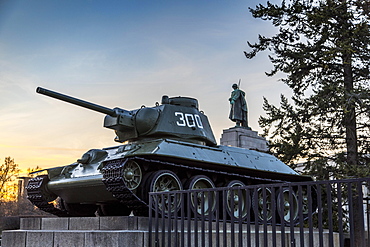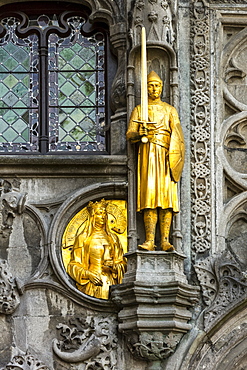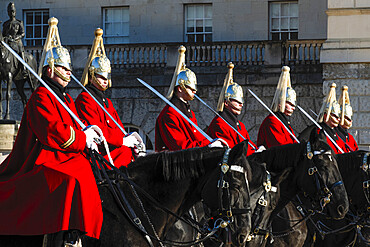Recent searches
Loading...
1216-733 - Lion Monument by Lucas Ahorn for Swiss soldiers who died in the French Revolution, Lucerne, Switzerland, Europe
848-2773 - Soldiers guarding Monument to the Unknown Soldier, Athens, Attica, Greece
832-404271 - Moscow, Russia, January 2016: an academy of soldiers visiting Red Square in Moscow in a beautiful sunset, Europe
832-404270 - Moscow, Russia, January 2016: an academy of soldiers visiting Red Square in Moscow in a beautiful sunset, Europe
832-403362 - Monument of Encounter, commemorates the meeting of Soviet and American soldiers in 1945 on the Elbe, Torgau, Saxony, Germany, Europe
832-402691 - Soldiers' commemorative with view to sea. San Felipe. Vulcano Fogo. Fogo. Cabo Verde. Africa
832-402402 - Generic view of a veterans cemetery on top of a hill showing American pride
832-402401 - Generic view of a veterans cemetery on top of a hill showing American pride
832-400461 - Soviet soldier with weapon and flag, Monument to the soldiers of the Red Army who died in the Second World War, Dresden, Saxony, Germany, Europe
1311-630 - The haunted Massacre House Ruins in Canyon del Muerto (Canyon of the Dead), on the north end of Canyon De Chelly, site of a Navajo massacre by Spanish Soldiers in 1825, Arizona, United States of America, North America
832-399656 - White peace dove sitting on leg of soldier. Generative AI illustration
832-399891 - Soviet memorial with bronze figures of Russian soldiers and obelisk, Bandenburg an der Havel, Brandenburg, Germany, Europe
832-399892 - Soviet memorial with bronze figures of Russian soldiers and obelisk, Bandenburg an der Havel, Brandenburg, Germany, Europe
860-291191 - White marble cross where American soldiers are buried, first American military cemetery of World War II, Colleville-sur-Mer, Calvados, Normandy, France
832-397327 - Monument to the Fallen of the Italian Flying Squadron in Lake Trasimeno, Umbria
832-397143 - War memorial to the fallen of the 1st World War at the Place de la Liberte, medieval old town of Domfront, Domfront en Poiraie, department of Orne, Normandy region, France, Europe
1184-7116 - Peacekeeping Soldiers Memorial, Aktau, Caspian Sea, Kazakhstan, Central Asia, Asia
1113-107738 - Changing of the Guard, Buckingham Palace, London, England, United Kingdom
1113-107742 - Changing of the Guard, Buckingham Palace, London, England, United Kingdom
1113-107741 - Changing of the Guard, Buckingham Palace, London, England, United Kingdom
1113-107740 - Changing of the Guard, Buckingham Palace, London, England, United Kingdom
1113-107739 - Changing of the Guard, Buckingham Palace, London, England, United Kingdom
746-91643 - The victory square and the big memorial commemorating the great patriotic war, 2. world war. The capital Bishkek . Asia, Central Asia, Kyrgyzstan
832-395532 - Altar room with resurrection Christ, Kaiser Wilhelm Memorial Church, Kurfuerstendamm, Charlottenburg, Berlin, Germany, Europe
1350-5892 - National Afghan Army (ANA) trainingschool in Kabul.
1350-5890 - National Afghan Army (ANA) trainingschool in Kabul.
1350-5891 - National Afghan Army (ANA) trainingschool in Kabul.
1350-5889 - National Afghan Army (ANA) trainingschool in Kabul.
1350-5912 - Afghan National Army (ANA) soldiers in Tarin Kowt, Afghanistan
1350-5910 - Afghan National Army (ANA) soldiers in Tarin Kowt, Afghanistan
1350-5914 - Afghan National Army (ANA) soldiers in Tarin Kowt, Afghanistan
1350-5911 - Afghan National Army (ANA) soldiers in Tarin Kowt, Afghanistan
1350-5909 - Afghan National Army (ANA) soldiers in Tarin Kowt, Afghanistan
1350-5915 - Afghan National Army (ANA) soldiers in Tarin Kowt, Afghanistan
1350-5913 - Afghan National Army (ANA) soldiers in Tarin Kowt, Afghanistan
1350-5894 - Afghan National Army (ANA) soldiers in Tarin Kowt, Afghanistan
1350-5893 - Afghan National Army (ANA) soldiers in Tarin Kowt, Afghanistan
1350-5104 - Greek soldier, an Evzone, on sentry duty outside the Parliament building, Athens, Greece
1350-4852 - Terracotta army, Xi'an, Shaanxi Province, China
1350-4805 - Tsarouhi, footwear of an Evzone, a Greek soldier, outside the Presidential Palace, Athens, Greece
1350-4898 - Greek soldier, an Evzone, outside the Presidential Palace, Athens, Greece
1350-5021 - Greek soldier, an Evzone, outside the Presidential Palace, Athens, Greece
1350-4827 - Greek soldier, an Evzone, outside the Presidential Palace, Athens, Greece
1350-4104 - Detail of a gilded cistern in the Forbidden City, Beijing, China. The gold leaf was scratched off by foreign soldiers during the Boxer Rebellion.
1350-4103 - Detail of a gilded cistern in the Forbidden City, Beijing, China. The gold leaf was scratched off by foreign soldiers during the Boxer Rebellion.
1116-51845 - Interior Fresco, St George Church Mirauti, 1375; Suceava, Suceava County, Romania
1116-51843 - Interior Fresco, St George Church Mirauti, 1375; Suceava, Suceava County, Romania
1113-107300 - Changing of the guard at the Eternal Flame in the Mamayev Kurgan memorial complex next to the giant Motherland Ruf statue, Volgograd, Volgograd Oblast, Russia, Europe
1113-106338 - Evzone soldiers performing change of guard, Athens, Greece, Europe,
1113-106339 - Evzone soldiers performing change of guard, Athens, Greece, Europe,
1113-106340 - Evzone soldiers performing change of guard, Athens, Greece, Europe,
1113-106337 - Evzone soldier performing change of guard, Athens, Greece, Europe,
1350-3758 - Easter Holy Week procession in Antigua, Guatemala. Jesus Nazareno de la Penitencia Procession in Antigua, Guatemala. Holy Week, friday.
1350-2688 - Verges, a small town in the Northeast of Catalonia (Spain), during Easter celebrates the Procession of Verges with skeletons dancing on the sound of a drum, Roman soldiers, known as the 'Manages', and a representation of the life and crucifixion of Jesus Christ. The Procession features the Dance of Death, a tradition from the Middle Age associated with epidemics and plagues and the only one remaining in Spain Ten skeletons dance to the beat of a drum to remember that no one is exempt of death. The backdrop of the medieval walls and towers of Verges is key to this macabre staging.
1350-3754 - A boy spreads incense at the Jesus Nazareno del Perdon procession during Easter Holy Week in Antigua Guatemala. Holy Week (Semana Santa) carpet of colored sawdust (alfombras) being prepared on Antigua street. Jesus Nazareno de la Penitencia Procession in Antigua, Guatemala.
1350-2693 - Verges, a small town in the Northeast of Catalonia (Spain), during Easter celebrates the Procession of Verges with skeletons dancing on the sound of a drum, Roman soldiers, known as the 'Manages', and a representation of the life and crucifixion of Jesus Christ. The Procession features the Dance of Death, a tradition from the Middle Age associated with epidemics and plagues and the only one remaining in Spain Ten skeletons dance to the beat of a drum to remember that no one is exempt of death. The backdrop of the medieval walls and towers of Verges is key to this macabre staging.
1350-2692 - Verges, a small town in the Northeast of Catalonia (Spain), during Easter celebrates the Procession of Verges with skeletons dancing on the sound of a drum, Roman soldiers, known as the 'Manages', and a representation of the life and crucifixion of Jesus Christ. The Procession features the Dance of Death, a tradition from the Middle Age associated with epidemics and plagues and the only one remaining in Spain Ten skeletons dance to the beat of a drum to remember that no one is exempt of death. The backdrop of the medieval walls and towers of Verges is key to this macabre staging.
1350-2695 - Verges, a small town in the Northeast of Catalonia (Spain), during Easter celebrates the Procession of Verges with skeletons dancing on the sound of a drum, Roman soldiers, known as the 'Manages', and a representation of the life and crucifixion of Jesus Christ. The Procession features the Dance of Death, a tradition from the Middle Age associated with epidemics and plagues and the only one remaining in Spain Ten skeletons dance to the beat of a drum to remember that no one is exempt of death. The backdrop of the medieval walls and towers of Verges is key to this macabre staging.
1350-3760 - Easter Holy Week procession in Antigua, Guatemala. Jesus Nazareno de la Penitencia Procession in Antigua, Guatemala. Holy Week, friday.
1350-2690 - Verges, a small town in the Northeast of Catalonia (Spain), during Easter celebrates the Procession of Verges with skeletons dancing on the sound of a drum, Roman soldiers, known as the 'Manages', and a representation of the life and crucifixion of Jesus Christ. The Procession features the Dance of Death, a tradition from the Middle Age associated with epidemics and plagues and the only one remaining in Spain Ten skeletons dance to the beat of a drum to remember that no one is exempt of death. The backdrop of the medieval walls and towers of Verges is key to this macabre staging.
1350-2691 - Verges, a small town in the Northeast of Catalonia (Spain), during Easter celebrates the Procession of Verges with skeletons dancing on the sound of a drum, Roman soldiers, known as the 'Manages', and a representation of the life and crucifixion of Jesus Christ. The Procession features the Dance of Death, a tradition from the Middle Age associated with epidemics and plagues and the only one remaining in Spain Ten skeletons dance to the beat of a drum to remember that no one is exempt of death. The backdrop of the medieval walls and towers of Verges is key to this macabre staging.
1350-2687 - Verges, a small town in the Northeast of Catalonia (Spain), during Easter celebrates the Procession of Verges with skeletons dancing on the sound of a drum, Roman soldiers, known as the 'Manages', and a representation of the life and crucifixion of Jesus Christ. The Procession features the Dance of Death, a tradition from the Middle Age associated with epidemics and plagues and the only one remaining in Spain Ten skeletons dance to the beat of a drum to remember that no one is exempt of death. The backdrop of the medieval walls and towers of Verges is key to this macabre staging.
1350-3763 - Easter Holy Week procession in Antigua, Guatemala. Jesus Nazareno de la Penitencia Procession in Antigua, Guatemala. Holy Week, friday.
1350-2689 - Verges, a small town in the Northeast of Catalonia (Spain), during Easter celebrates the Procession of Verges with skeletons dancing on the sound of a drum, Roman soldiers, known as the 'Manages', and a representation of the life and crucifixion of Jesus Christ. The Procession features the Dance of Death, a tradition from the Middle Age associated with epidemics and plagues and the only one remaining in Spain Ten skeletons dance to the beat of a drum to remember that no one is exempt of death. The backdrop of the medieval walls and towers of Verges is key to this macabre staging.
1350-2696 - Verges, a small town in the Northeast of Catalonia (Spain), during Easter celebrates the Procession of Verges with skeletons dancing on the sound of a drum, Roman soldiers, known as the 'Manages', and a representation of the life and crucifixion of Jesus Christ. The Procession features the Dance of Death, a tradition from the Middle Age associated with epidemics and plagues and the only one remaining in Spain Ten skeletons dance to the beat of a drum to remember that no one is exempt of death. The backdrop of the medieval walls and towers of Verges is key to this macabre staging.
1350-2697 - Verges, a small town in the Northeast of Catalonia (Spain), during Easter celebrates the Procession of Verges with skeletons dancing on the sound of a drum, Roman soldiers, known as the 'Manages', and a representation of the life and crucifixion of Jesus Christ. The Procession features the Dance of Death, a tradition from the Middle Age associated with epidemics and plagues and the only one remaining in Spain Ten skeletons dance to the beat of a drum to remember that no one is exempt of death. The backdrop of the medieval walls and towers of Verges is key to this macabre staging.
1350-2694 - Verges, a small town in the Northeast of Catalonia (Spain), during Easter celebrates the Procession of Verges with skeletons dancing on the sound of a drum, Roman soldiers, known as the 'Manages', and a representation of the life and crucifixion of Jesus Christ. The Procession features the Dance of Death, a tradition from the Middle Age associated with epidemics and plagues and the only one remaining in Spain Ten skeletons dance to the beat of a drum to remember that no one is exempt of death. The backdrop of the medieval walls and towers of Verges is key to this macabre staging.
1178-34892 - Soldiers guarding Parliament building, Athens, Greece
832-393044 - Soviet memorial in front of the Marienkirche, Stralsund, Mecklenburg-Vorpommern, Germany, Europe
832-391977 - Soldier's memorial in front of the town church St. Nikolai, Jueterbog, Brandenburg, Germany, Europe
1350-965 - Teenagers who were child soldier during their childhood that belonged to armed groups of the Colombian conflict. The international day against the child soldier is known worldwide also as the day of the red hand, colombia
1116-50157 - Fresco, Miracle-Image of the Saviour Church, Kremlin, Golden Ring; Rostov Veliky, Yaroslavl Oblast, Russia
1116-50092 - World War One war memorial at Chollerton Parish; Chollerton, Northumberland, England
1116-49994 - War Memorial with Eternal Flame, Assumption Cathedral; Yaroslavl, Yaroslavl Oblast, Russia
1116-50090 - Bench as a war memorial (1918 - 2018) commemorating one hundred years, Chollerton Parish; Chollerton, Northumberland, England
1116-50093 - World War One memorial of a soldier with rifle and poppy; Wark, Northumberland, England
1116-50027 - Fresco in the Church of St John the Baptist; Yaroslavl, Yaroslavl Oblast, Russia
1116-50160 - Fresco, Gate Church of the Resurrection (1670), Kremlin, Golden Ring; Rostov Veliky, Yaroslavl Oblast, Russia
1116-49995 - War Memorial with Eternal Flame, Assumption Cathedral; Yaroslavl, Yaroslavl Oblast, Russia
1116-50091 - World War One war memorial at Chollerton Parish; Chollerton, Northumberland, England
809-8228 - Martyrs' Memorial Cemetery Kovaci, the main cemetery for soldiers from the Bosnian Army, Stari Grad, Sarajevo, Bosnia, Europe
809-8229 - Martyrs' Memorial Cemetery Kovaci, the main cemetery for soldiers from the Bosnian Army, Stari Grad, Sarajevo, Bosnia, Europe
812-91 - Soldier standin in front of Ho Chi Minh's tomb, Hanoi, Vietnam, Indochina, Southeast Asia, Asia
812-110 - Soldier on bicycle, Hanoi, Vietnam, Indochina, Southeast Asia, Asia
832-383920 - Monument to the Soviet Soldiers, at the Tiergarten, Berlin, Germany, Europe
1116-48829 - Rows of white crosses on grass, Cambridge American Cemetery and Memorial, Cambridge, Cambridgeshire, England
1116-48828 - Comrade in Arms grave at the Cambridge American Cemetery and Memorial, Cambridge, Cambridgeshire, England
1116-47280 - Close-up of a gold statue on a decorative building facade, Bruges, Belgium
805-1325 - Terracotta Army, soldiers and a horse, buried with Emperor Qin Shi Huang in 210-209 BC, UNESCO World Heritage Site, Xian, Shaanxi, China, Asia
805-1324 - Terracotta Army, soldiers and a horse, buried with Emperor Qin Shi Huang in 210-209 BC, UNESCO World Heritage Site, Xian, Shaanxi, China, Asia
1176-1031 - Soldiers of the Queen's Lifeguard at the Changing of the Guard on Horse Guard's Parade, London, England, United Kingdom, Europe
718-2375 - Evzone soldiers performing change of guard, Athens, Greece, Europe
718-2377 - Evzone soldiers performing change of guard, Athens, Greece, Europe
718-2384 - Evzone soldiers performing change of guard, Athens, Greece, Europe
718-2379 - Evzone soldiers performing change of guard, Athens, Greece, Europe
1116-42096 - Composite image of silhouetted pyramids, palm trees and a soldier with camels at sunset






